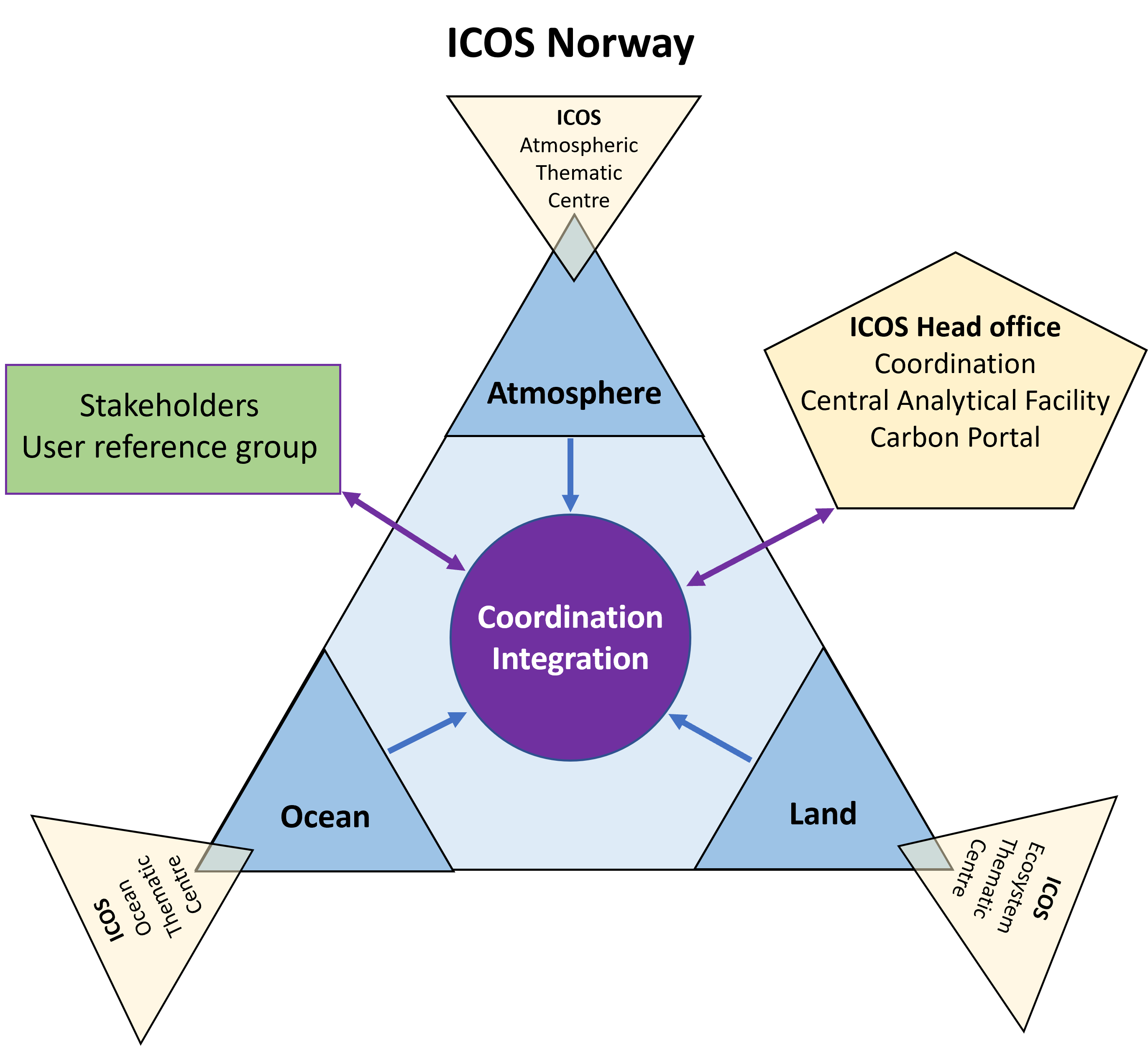
The ICOS Norway infrastructure and its interaction mechanisms.
Ocean
The ocean component measures carbon dioxide (CO2) concentration in the surface ocean using scientific equipment installed at the ocean ICOS stations M/S Tukuma Arctica, M/S Sea Cargo Express, R/V G.O. Sars, and R/V Kronprins Haakon for quantifying the air-sea flux, man-made CO2 content, and its effects as Ocean Acidification. In 2023, the new ocean station M/S Richard With will join the ICOS network.
The ocean component is operated by the University of Bergen (UoB), NORCE Norwegian Research Centre (NORCE), Norwegian Institute for Water Research (NIVA), and the Norwegian Polar Institute (NPI).
Contact person: Are Olsen (are.olsen@uib.no)
Atmosphere
The atmospheric component provides measurements of CO2, methane (CH4), carbon monoxide(CO) and nitrous oxide (NO2) in the atmosphere at Birkenes Observatory (Aust-Agder, southern Norway) and Zeppelin Observatory (outside Ny-Ålesund, Svalbard) for understating of changes, variations in these components on long-term as well as shorter times scales. Both observatories have a comprehensive measurement program including numerous of atmospheric components for the detection of atmospheric change. In 2023, the new atmospheric station at Hurdal will join the network.
Norwegian Institute for Air Research (NILU) has carried out observations of atmospheric composition at these sites since the 1970s and 1980s and will coordinate the atmospheric measurements for ICOS Norway.
Contact person: Stephen Platt (sp@nilu.no)
Ecosystem
The ecosystem component measures the exchange of the uptake by the boreal forests in southern Norway using scientific instruments installed at the flux tower inHurdal.
Norwegian Institute of Bioeconomy Research (NIBIO) is operating the ecosystem component.
Contact person: Holger Lange (holger.lange@nibio)
Integration
The integration component aims to assemble all measurements into an inversion model to constrain the net CO2 and CH4 balance of Norway.
Norwegian Institute for Air Research (NILU) is leading the integration component.
Contact person: Christine Groot Zwaaftink (cgz@nilu.no)
Coordination
The coordination ensures the ICOS Norway to achieve its goals by guiding the implementation of the infrastructure project. The coordinator leads the ICOS Norway SSC (Scientific Steering Committee) and calls for the GA (General Assembly) and interact and liaise with funding body and all partners.
The ICOS Norway coordinator is Siv Kari Lauvset (siv.lauvset@norceresearch.no) from NORCE.
Norwegian National Focal Point
The National Focal Point is an individual recognised by the community to be the main communication point between the ICOS Norway station community and the ICOS ERIC.
The Norwegian National Focal point is Stephen Platt (sp@nilu.no) from NILU.